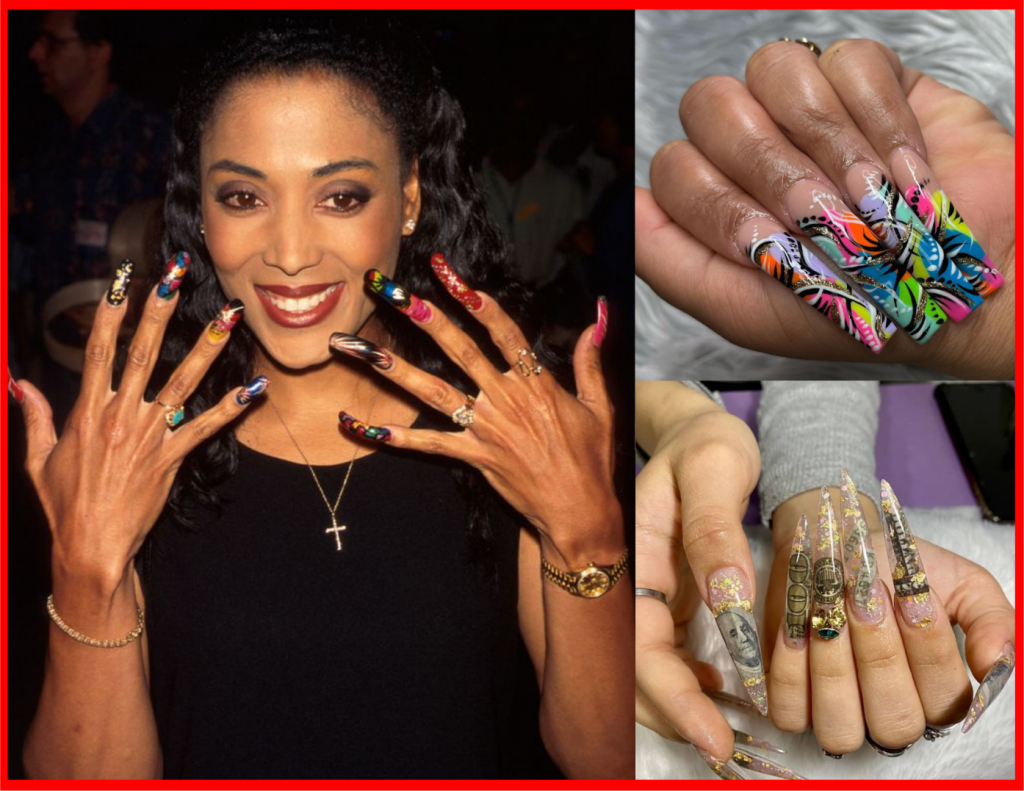History in The Making
NailPro January/February 2023 Issue (Unedited Version)
By: Asia Bloodworth

From Mansa Musa to Madam CJ Walker to Andre Leon Talley, style has been a staple in the Black community. And in the Black diaspora, dressing and decorating the hands has always been a means to show charisma and status. For over 2,000 years, eastern Africans have been known to dye their hands and fingertips in a method called “Mehendi” during celebrations and to signify one’s virtues. Currently, women of Sudan are dyeing their fingertips in protest against female genital mutilation, a horrid practice that is said to affect 98% of women in Somalia and 89% in Sudan. Hands play such a vital role in our lives and in Africa, working with your hands was a necessity. So, even though nail art had not been popularized yet, Africans would discover organic means like baobab oil, moringa oil, and shea butter that are used to promote healthy nails and skin to this very day.
Before nail art would become the rage, African hands would create art that would inspire great artists such as Pablo Picasso, Georges Braque and Henri Matisse. Their fascination with African sculptures and masks would inspire the Cubism Movement, for which art Pablo Picasso is most known for. A Met Museum article, “African Influences in Modern Art” says”, “German Expressionist painters such as Ernst Ludwig Kirchner of Die Brücke (The Bridge) group, based in Dresden and Berlin, conflated African aesthetics with the emotional intensity of dissonant color tones and figural distortion, to depict the anxieties of modern life.” For most of the modern era, nails would play a modest role with french tips being at the high end of the nail design spectrum. Until the ostentatious nature of a bold and emerging sound brewing in the Black neighborhoods of New York City called Hip Hop would change the game completely.
Hip Hop’s “It’s all about me” ultra arrogant nature, would encourage young black kids all over the United States to express themselves in the most extravagant and gaudy means financially possible and nails were not left out of that equation. Along with fresh sneakers and big gold chains, long, curved nails would reemerge as a centerpiece for young black girls growing up in the Hip Hop era. Acrylic nails would create a canvas that would become a staple for self expression. As the hip hop era grew, so did nail trends such as the iconic money nails created by renowned Nail Artist Bernadette Thompson and other trends ranging from nail bling & charms and intricate and abstract designs representing their region/neighborhoods and favorite fashion brands. Afrobeats would soon join in with their own spin on the culture. Generations later, those African hands that inspired the likes of Pablo Picasso were now sporting nail art representing their respective countries and cultures. And oils that were used by Africans for thousands of years, would soon find themselves in global demand. Hip Hop, the little engine that could, was now impacting anything and everything with it’s “Go big or go home” culture that crossed it’s path.
On my YouTube channel, I have interviewed over 160 nail artists. With a couple of black nail artists I interviewed, I asked the question, “Tell us about your perspective of black people in the beauty industry.” Sky Somalia, owner of Sky Nails Intl(International) in New York City wrote, “As a professional in the beauty industry, I have always given my respect to black beauty icons for their creativity, resilience and willingness to learn as the industry changes. Throughout the years, our culture has been a huge influence in fashion and art.” Tonika Owens, owner of Touched By Tonika Salon, located in Oklahoma City, Oklahoma says, “We set the standards with the help and inspiration from other cultures. We put our own spin on ANYTHING we do and it motivates me to remain true to myself and vision even with inspiration from others who are around me.” In an interview with Melody Nyakio, owner of Golden Bliss Spa in Nairobi, Kenya, she recalls that there weren’t many salons when she was a child and though in Nairobi supplies are limited, the demand has been substantial and she looks forward to establishing more locations and services.
Submitted to Nail Pro Magazine Dec. 14,2022